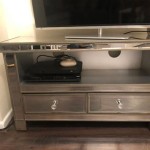How to Mirror iPhone to Macbook Pro Wirelessly
Wirelessly mirroring an iPhone's screen to a Macbook Pro offers a convenient way to share content, present slides, demonstrate apps, or enjoy media on a larger display. This functionality leverages Apple's AirPlay technology, which enables seamless streaming between compatible devices. This article will outline the various methods for achieving wireless mirroring, troubleshoot common issues, and explain the requirements for a successful connection.
Using AirPlay to a Compatible Macbook Pro
The most straightforward method for mirroring an iPhone to a Macbook Pro involves using AirPlay directly to a compatible model. Macs running macOS Monterey or later generally support receiving AirPlay streams directly. This eliminates the need for third-party applications and offers a streamlined experience.
To mirror using this method, ensure both the iPhone and Macbook Pro are connected to the same Wi-Fi network. On the iPhone, open Control Center. Depending on the iPhone model, this is done by swiping down from the top-right corner of the screen or swiping up from the bottom. Tap the "Screen Mirroring" button. A list of available AirPlay receivers will appear. Select your Macbook Pro from the list. The iPhone's screen will then be mirrored on the Macbook Pro's display.
Mirroring with AirPlay to an Apple TV or AirPlay 2-Compatible Smart TV
If the Macbook Pro does not support receiving AirPlay directly, an alternative approach involves using an Apple TV or an AirPlay 2-compatible smart TV as an intermediary. The iPhone can mirror its screen to the Apple TV or smart TV, and then the Macbook Pro can mirror or extend its display to the same device using its built-in screen mirroring capabilities.
To accomplish this, connect both the Apple TV (or AirPlay 2-compatible smart TV) and the Macbook Pro to the same Wi-Fi network. Mirror the iPhone's screen to the Apple TV or smart TV using the steps outlined in the previous section. On the Macbook Pro, open System Preferences and navigate to "Displays." Click the "AirPlay Display" dropdown menu and select the Apple TV or smart TV. Choose whether to mirror the Macbook Pro's display or extend it, creating a larger workspace.
Utilizing Third-Party Screen Mirroring Applications
Several third-party applications offer screen mirroring functionality for devices that don't natively support AirPlay receiving. These applications typically create a virtual AirPlay receiver on the Macbook Pro, allowing the iPhone to connect as it would to an Apple TV. While these applications can be helpful, they may introduce latency or require specific configurations.
Research and select a reputable third-party screen mirroring application from the Mac App Store. Install and launch the application on the Macbook Pro. Follow the application's instructions to enable AirPlay receiving. On the iPhone, open Control Center and tap the "Screen Mirroring" button. The Macbook Pro running the mirroring application should appear in the list of available AirPlay receivers. Select the Macbook Pro to initiate the mirroring process.
Troubleshooting Common Mirroring Issues
Occasionally, users may encounter issues when attempting to mirror their iPhone to a Macbook Pro wirelessly. Several common problems and their solutions are outlined below:
Connectivity Problems:
Ensure both devices are connected to the same Wi-Fi network and that the network is functioning correctly. Restarting the Wi-Fi router can sometimes resolve connectivity issues. Check for any firewall settings on the Macbook Pro that might be blocking AirPlay connections.Software Updates:
Outdated software on either the iPhone or the Macbook Pro can prevent AirPlay from working correctly. Ensure both devices are running the latest versions of their respective operating systems. For third-party applications, check for updates within the app or on the developer's website.Interference from other Devices:
Other devices using the same Wi-Fi network, especially those streaming high-bandwidth content, can interfere with AirPlay performance. Minimize the number of devices using the network during mirroring or try using a 5GHz Wi-Fi network if available.Optimizing the Mirroring Experience
For optimal performance, consider the following tips:
Reduce Network Congestion:
Minimize other network activity during mirroring for smoother performance. Close unnecessary applications and pause any large downloads.Adjust Display Settings:
On the Macbook Pro, adjust the display resolution and scaling as needed to optimize the mirrored image for the larger screen. Experiment with different settings to find the best balance between image quality and performance.Close Unnecessary Apps on the iPhone:
Closing background apps on the iPhone can free up resources and improve mirroring performance, especially when mirroring graphically intensive content like games or videos.
How To Mirror Iphone Mac Wirelessly Full Guide

How To Mirror Iphone Screen Mac Quick Easy Wireless 2024

2024 Updated How To Mirror Iphone Mac With 5 Methods

How To Mirror Iphone Mac Wirelessly Full Guide

How To Mirror Iphone Screen Mac Quick Easy Wireless 2024

How To Wirelessly Mirror Iphone Or Ipad Display A Mac Tutorial

2024 Updated How To Mirror Iphone Mac Macbook

Mirror Iphone Ipad To Mac Wirelessly Rt

2024 Updated How To Mirror Iphone Mac With 5 Methods

How To Mirror Iphone Mac 8 Methods








